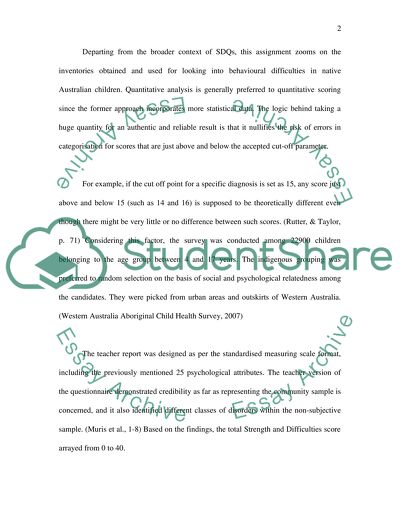Cite this document
(“Evaluate the effectiveness of the Strengths and Difficulties Essay”, n.d.)
Evaluate the effectiveness of the Strengths and Difficulties Essay. Retrieved from https://studentshare.org/miscellaneous/1508658-evaluate-the-effectiveness-of-the-strengths-and-difficulties-questionnaire-sdq-for-measuring-emotional-andor-behavioural-difficulties-in-children-or-adolescents
Evaluate the effectiveness of the Strengths and Difficulties Essay. Retrieved from https://studentshare.org/miscellaneous/1508658-evaluate-the-effectiveness-of-the-strengths-and-difficulties-questionnaire-sdq-for-measuring-emotional-andor-behavioural-difficulties-in-children-or-adolescents
(Evaluate the Effectiveness of the Strengths and Difficulties Essay)
Evaluate the Effectiveness of the Strengths and Difficulties Essay. https://studentshare.org/miscellaneous/1508658-evaluate-the-effectiveness-of-the-strengths-and-difficulties-questionnaire-sdq-for-measuring-emotional-andor-behavioural-difficulties-in-children-or-adolescents.
Evaluate the Effectiveness of the Strengths and Difficulties Essay. https://studentshare.org/miscellaneous/1508658-evaluate-the-effectiveness-of-the-strengths-and-difficulties-questionnaire-sdq-for-measuring-emotional-andor-behavioural-difficulties-in-children-or-adolescents.
“Evaluate the Effectiveness of the Strengths and Difficulties Essay”, n.d. https://studentshare.org/miscellaneous/1508658-evaluate-the-effectiveness-of-the-strengths-and-difficulties-questionnaire-sdq-for-measuring-emotional-andor-behavioural-difficulties-in-children-or-adolescents.


